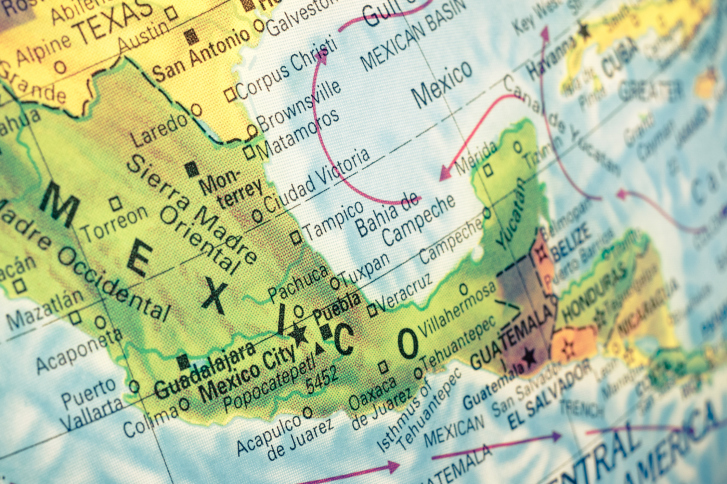Many regions of Mexico experienced wind speeds up to 20% below average throughout 2015, according to Vaisala’s newly released performance maps, which illustrate widespread departures from normal wind speeds, thus underlining the importance of proper resource assessment and due diligence for ongoing investment in wind power.
Meanwhile, says Vaisala, the Oaxacan coast – where a vast majority of operational projects are located – suffered a lesser impact but still saw high levels of month-to-month variability.
According to Vaisala, these departures from mean wind speeds highlight the importance of gaining a deep understanding of how much seasonal and year-to-year variability is possible at a location prior to a major investment – which is critical as Mexico eyes significant wind energy expansion, including aiming to quadruple wind capacity and add as much as 10 GW in a three-year period.
Furthermore, as wind power nears grid parity in Mexico due to high energy prices and falling turbine costs, keeping wind cost-competitive with conventional forms of generation will be crucial to the success of the market, says Vaisala, which adds that managing the long-term performance of sites is an essential part of bringing down the levelized cost of wind energy generation.
Because wind speeds directly affect wind production, the study explains, an increase or decrease of 5% can have a 5%-15% impact on power generation. According to Vaisala, this illustrates a requirement for Mexican wind energy developers and operators to stay on top of resource assessment and due diligence processes throughout the project lifecycle.
The analysis also reveals that the well publicized U.S. wind drought of early 2015 – which hit wind farms in California and Texas particularly hard – also had a far-reaching effect on much of northern and central Mexico: First-quarter wind speeds in this region were 5%-20% below normal. The study says this anomaly was related to a large, high-pressure system across much of western North America that drove storm tracks into central Canada.
The trend weakened in the second and third quarter, but wind speeds remained below average. The final quarter of the year saw a shift in weather patterns with elevated wind speeds across much of northwestern Mexico – consistent with the strong El Niño climate signal, as well as some hurricane activity in the region.
The study says Mexico’s Oaxaca region – in particular, the dense area of development along the coast – is of key strategic importance to international wind energy investors: Due to its unique topography that creates a natural wind funnel through a break in the Sierra Madre mountain ranges to the North and South for air traveling from North America and the Caribbean, the area boasts one of the strongest wind resources in the country.
Fortunately, according to the analysis, in 2015, this area saw above-normal wind speeds in the first quarter and relatively neutral wind trends the remainder of the year. However, the quarterly maps do not reveal dramatic monthly changes in the wind resource, which saw shifts in wind speeds from 5% below normal to over 20% above normal from one month to the next. These large swings are by no means isolated events and should be well understood prior to investment, Vaisala notes.
January and June experienced significantly elevated wind speeds in this region, with deviations of over 20% above normal. Considering this part of the world sees wind speeds of 12-14 m/s, on average, in the winter, big jumps in wind speeds can actually pose a problem because extreme winds can force temporary shutdowns in the short term and, ultimately, wear down components and increase maintenance costs in the long term.
“With Mexico’s emerging wind industry bracing for rapid growth, investment choices must be made both swiftly and wisely,” says Pascal Storck, Vaisala’s global manager of Energy Services. “Reliable weather measurements and energy analysis ensure only the best projects and portfolios are selected, allowing operators to safeguard themselves against unexpected dips in generation due to wind variability.”
The full wind performance maps can be downloaded here.




